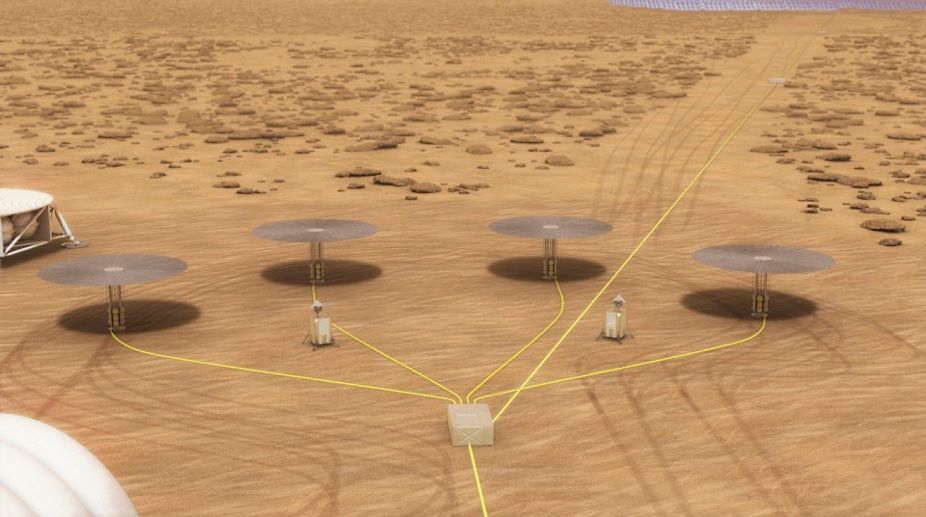To provide safe and plentiful energy for future robotic and human missions for Mars and beyond, NASA is conducting experiments on Kilopower – a small nuclear reactor that can generate a reliable power supply.
This pioneering space fission power system could provide up to 10 kilowatts of electrical power – enough to run two average households – continuously for at least 10 years, the US space agency said in a statement on Friday.
Advertisement
Four Kilopower units would provide enough power to establish an outpost.
“We want a power source that can handle extreme environments. Kilopower opens up the full surface of Mars, including the northern latitudes where water may reside,” said Lee Mason, NASA’s Principal Technologist for power and energy storage.
On the Moon, Kilopower could be deployed to help search for resources in permanently shadowed craters, Mason added.
When astronauts someday venture to the Moon, Mars and other destinations, one of the first and most important resources they will need is power.
A reliable and efficient power system will be essential for day-to-day necessities, such as lighting, water and oxygen, and for mission objectives, like running experiments and producing fuel for the long journey home. Fission power can provide abundant energy anywhere.
On Mars, the Sun’s power varies widely throughout the seasons, and periodic dust storms can last for months. On the Moon, the cold lunar night lingers for 14 days.
The prototype power system was designed and developed by NASA’s Glenn Research Center in collaboration with NASA’s Marshall Space Flight Center and the Los Alamos National Laboratory. NASA Glenn shipped the prototype power system from Cleveland to the Nevada National Security Site (NNSS) in late September. The team at the NNSS recently began tests on the reactor core.
According to Marc Gibson, the Kilopower lead engineer, the team will connect the power system to the core and begin end-to-end checkouts this month. The experiments should conclude with a full-power test lasting approximately 28 hours in late March, NASA said.











